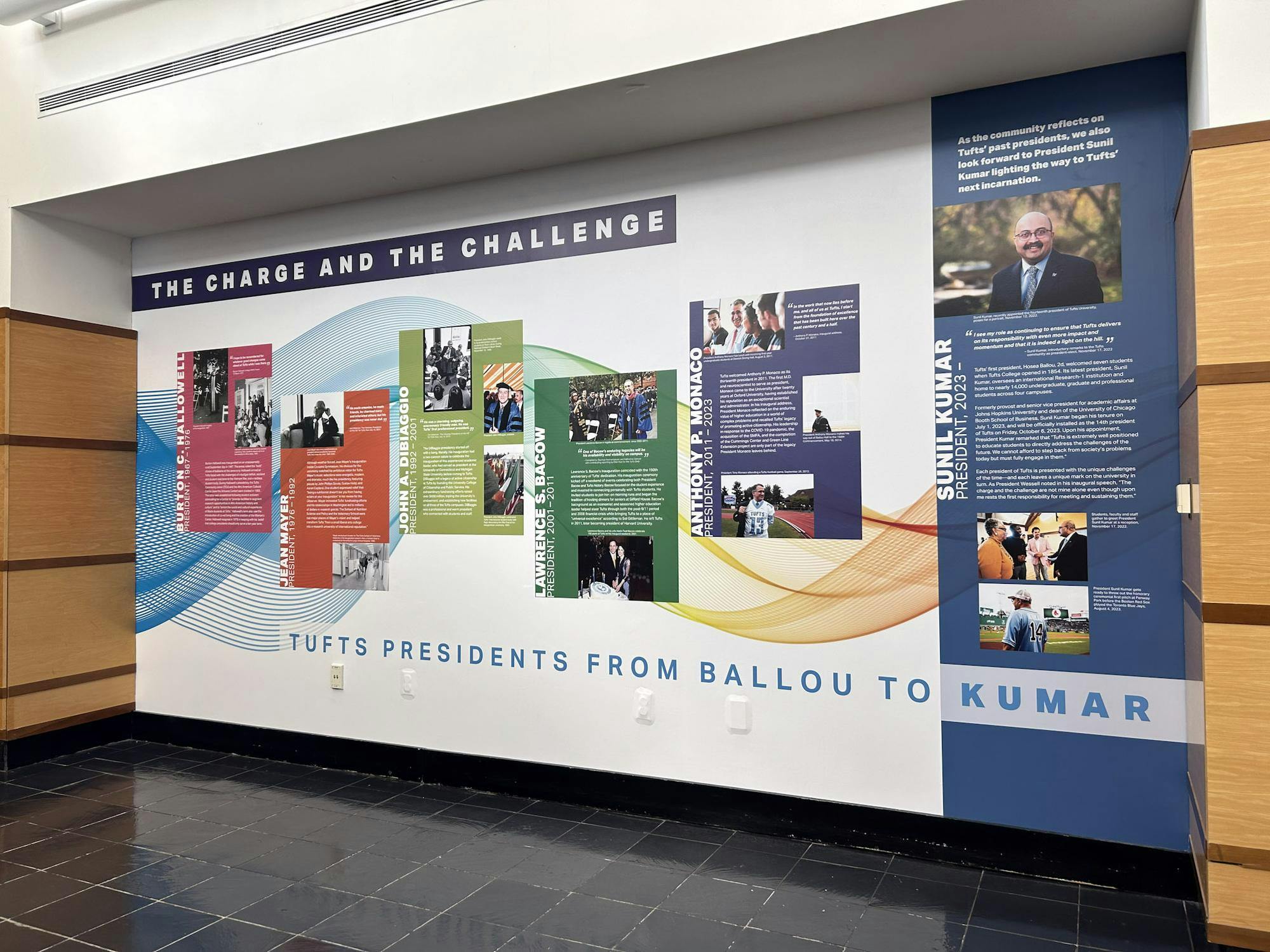“The Charge and the Challenge: Tufts Presidents from Ballou to Kumar,” a new exhibit by the Tufts Archival Research Center, opened on Oct. 6. The exhibit celebrates the legacy of Tufts presidents for the inauguration of President Sunil Kumar.
The exhibit features wall graphics at the Tisch Library main entrance formatted as a timeline of each of Tufts’ presidents since former university president Hosea Ballou in 1852, as well as an online component featuring artifacts curated by TARC with a connection to each of the presidents.
“I'd say people have a tendency to think of archives as focused on the past, and we obviously have a lot of old things going back to 1852, but we really see our work as future-oriented,” Dan Santamaria, university archivist and director of TARC, said. “We're preserving these materials, and we're stewarding them in order to share them. So we, and the entire community, can analyze and learn about the past. And so we can start to imagine and build a better future together.”
Because of the range of time that needed to be covered, the 13 presidents were divided among the TARC team.
“We do have a lot of material on the history of Tufts and each presidency,” Alexandra Bush, assistant archivist, said. “10,000 physical boxes and countless terabytes of data, so we really had to define our focus. In this case, there were a lot of things that we talked about focusing on because there's so much to say about each presidency.”
The archivists worked alongside exhibition designer Jennifer Liston Munson on the physical component of the exhibit.
“After the physical exhibit was finished, we put together an online exhibit based on [the physical exhibit], which actually expands on the information and the artifacts available,” Bush said. “[Online, we put] all the stuff that we wanted to put in the physical exhibit but didn't have room to.”
Santamaria said that the exhibit has quite a few highlights in terms of artifacts, but it also functions as a complete narrative.
“[The exhibit’s highlight] was less one specific item or document and more the ability to trace the whole arc of the university as it develops over time, since we're really covering the entire history of the university,” Santamaria said.
The opening of the exhibit featured many significant artifacts from the Tufts archives that encapsulate not only the presidents’ legacy but also their personality and relationship with the student body.
“Archives are also fun a lot of times, and not always totally, completely serious,” Santamaria said. “We have a lot of examples of [the archives being fun], both in the exhibit and then at the opening. We're able to allow people to interact with the objects. That can range from maps that have things like the golf course at Tufts, or the old reservoir over where the [residential quadrangle] was. … We have posters of President Wessel when he was dean titled ‘The Boy Dean’ when he was 25 years old.”
Bush said that it was interesting to see how Tufts reacted to moments in history and the process of documenting community experiences.
“It's really just the raw data that's produced by not just the president but the entire community,” Santamaria said. “It’s students and faculty and the administration and staff, as they're doing their work and living their lives, we're trying to capture that and document that. We hope that starts the process for folks of analyzing that data and helping us as a community charter our path forward together based on that evidence.”
TARC is located in the Tisch Library, and the archivists are open to answering any questions from students and faculty either in person at their office or online.
“The formal university records don't tell the full story of the university's past,” Santamaria said. “Over the last few years, our archivists have been working to center the stories of students, and also faculty, in underrepresented groups in the archives, and just trying to remove as many barriers to access as possible.”






